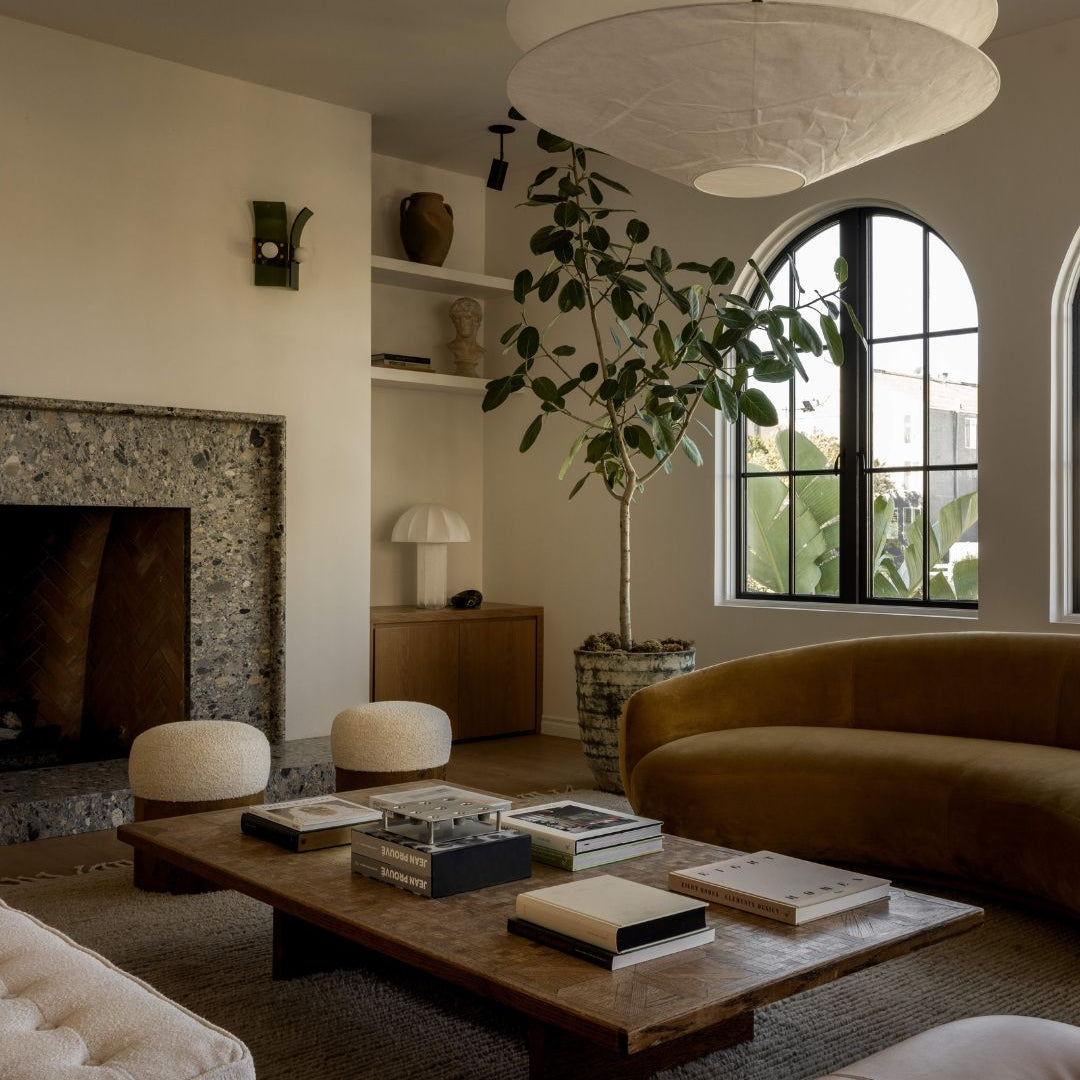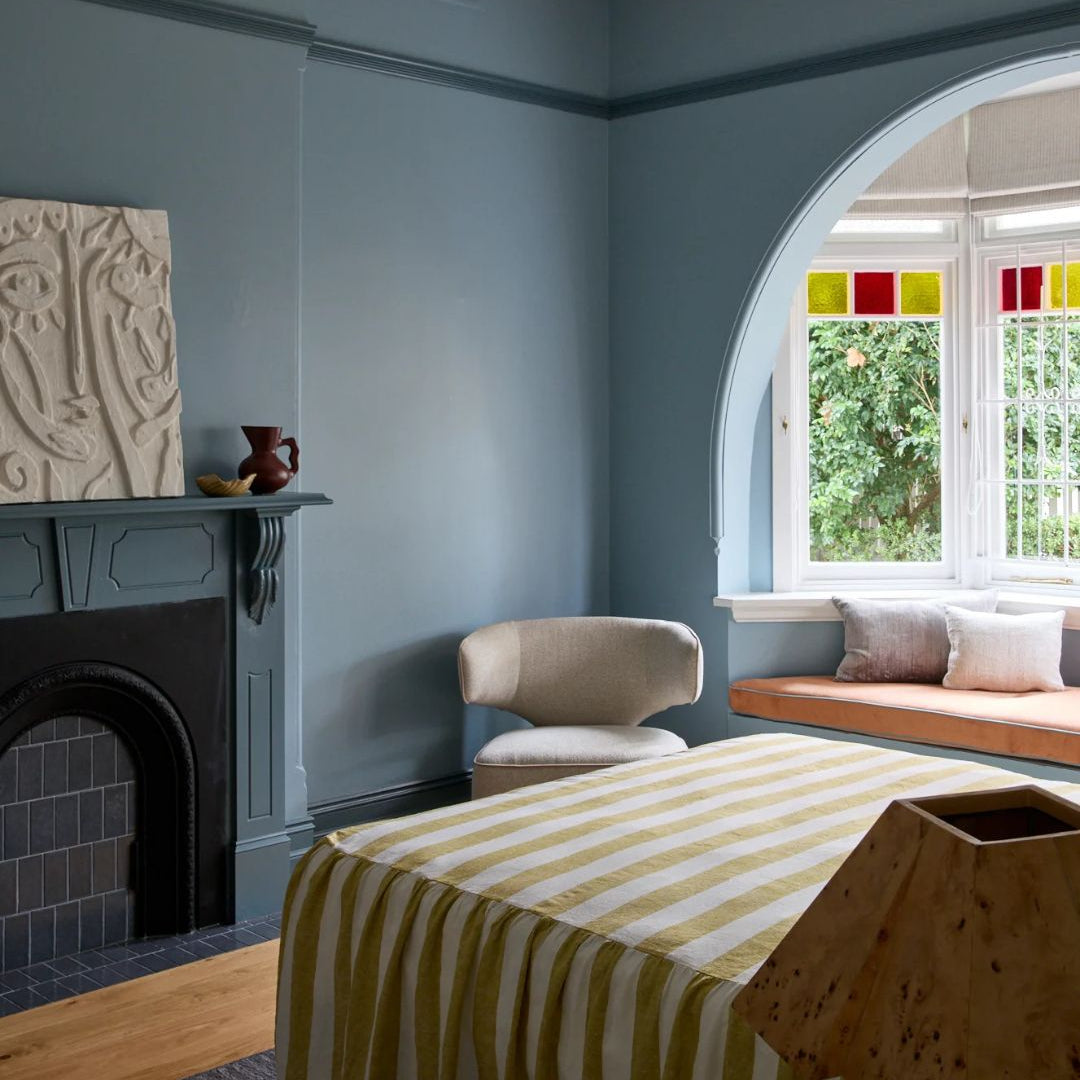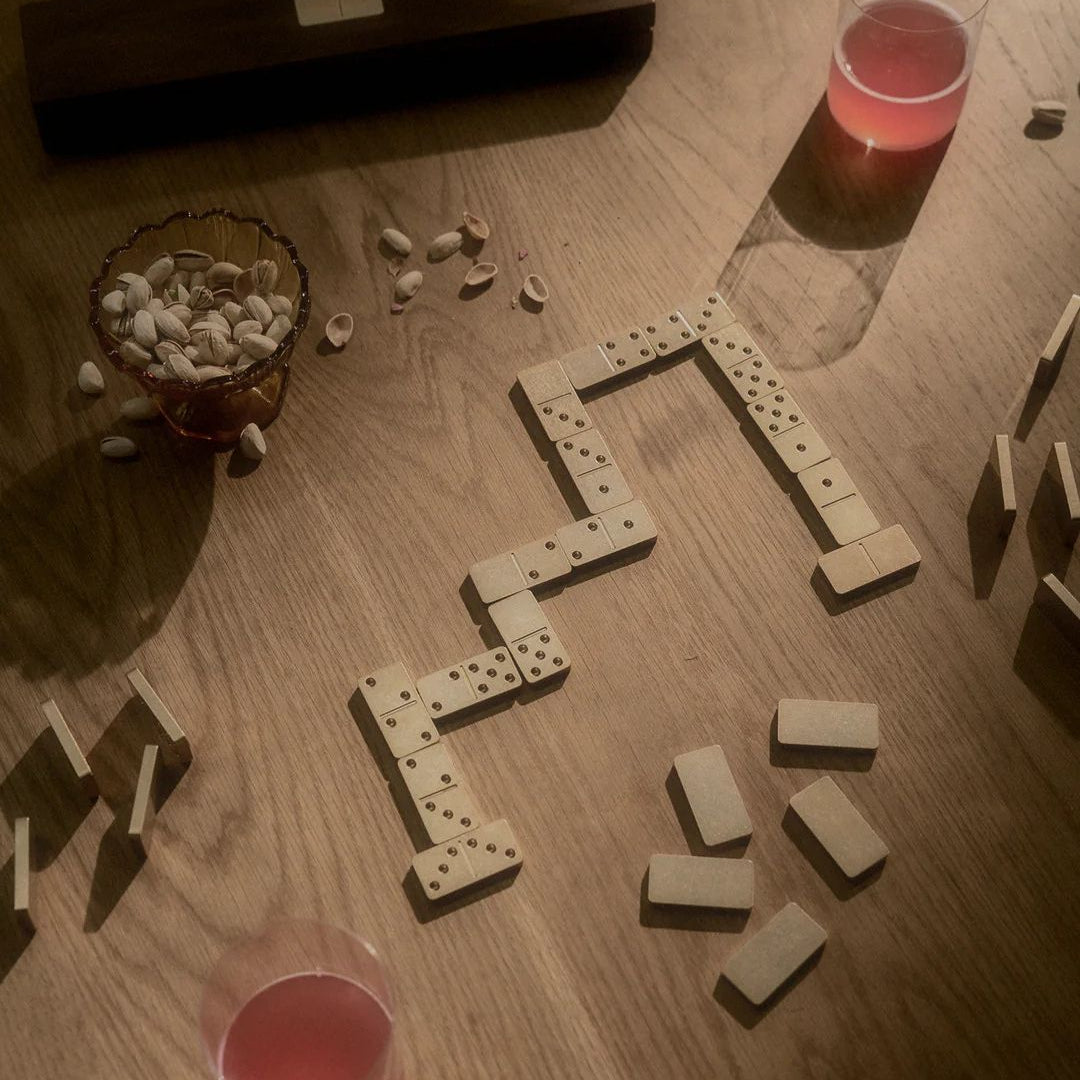The kitchen was the starting point for the entire design of our home. It set the tone and palette for what followed: a blend of warm timber, soft curves, and a layered mix of finishes that feel both sophisticated and personal.
Every element, from the joinery to the lighting, was carefully considered to bring together function, beauty and character. Here, I'll answer some of my most frequently asked questions about the space and share tips you can take into your own home.
1. How did you find inspiration for your kitchen's colour scheme and material choices?
Inspiration can strike anywhere - whether it’s nature, a book, or a favourite object. For my kitchen, I knew I wanted walnut veneer joinery, so that became the anchor for the entire palette. I selected a Brazilian Quartzite stone that complemented the warm timber tones and allowed the materiality to speak for itself.
TIP: I always recommend starting with one hero material you love - whether it’s timber, stone, or a favourite tile - and building the palette around it. A digital or physical mood board is a great tool to visualise how your materials and colours interact.
2. What's your advice for choosing a kitchen splashback and benchtop?
Balance is key—beauty and practicality should go hand in hand to ensure the choice you make works for your lifestyle. I chose Brazilian Quartzite for its beautiful patterning and tonal depth, but also because it’s stain and heat-resistant which is ideal for a family kitchen like mine. The same stone wraps up into the splashback to create visual continuity.
TIP: Choose a benchtop and splashback that offer both visual impact and durability, taking into account your lifestyle and specific needs. If you're unsure, take samples home and see how they look in your lighting throughout the day.
3. What's your approach to choosing kitchen hardware such as tapware and door handles?
I think of hardware as the jewellery of the home - a place to be expressive and elevate your joinery with a refined touch. I spent months researching handles before finding organically shaped brass pulls that felt sculptural and a little unexpected. I kept the brass finish consistent across the kitchen for cohesion, even using it on the kickboards.
TIP: Don’t overlook the small details - they can make a big impact. If you're working with a modest kitchen budget, consider investing in quality hardware to instantly elevate the space.
4. How did you create a cohesive kitchen design?
Cohesion began with the material palette. I spent weeks sourcing the right walnut timber veneer - it needed just the right tone and grain to evoke warmth without feeling heavy. This same timber features throughout the home, becoming a signature element that connects the spaces. The curved edges on the bench, rangehood and joinery not only soften the space visually, but also serve a practical purpose with young kids in the house.
TIP: When designing your kitchen, think beyond the room itself. Select 2-3 key materials or design motifs that can carry through to other parts of your home for visual continuity. Details like curved corners or consistent finishes can create a subtle but powerful sense of flow.
5. How did you approach lighting in the space?
Lighting was something I obsessed over (in the best way). I wanted to layer light sources so the kitchen felt bright and functional by day, but soft and atmospheric at night. I installed under-cabinet LED lighting for prep zones, added recessed ceiling lights for general illumination, and chose a sculptural paper pendant to add a warm, organic focal point above the dining area.
TIP: Use three types of lighting: task, ambient, and decorative. Start with what you need to see clearly, then layer in elements that create mood. Lighting isn’t just functional - it’s one of the easiest ways to add sculptural interest to your space.
6. How do you keep the kitchen functional without compromising on style?
Function was always a priority, but I didn’t want to sacrifice aesthetic. I integrated appliances and used concealed storage to keep surfaces clear. I also became deeply invested in the details - it took me months to find the right joinery handles, and when I discovered the organically shaped brass pulls, it sparked a flow-on effect for the rest of the hardware throughout the home. These small touches add a sense of craftsmanship and refinement that I love living with every day.
TIP: Don’t rush the details. Take time sourcing your hardware such as door handles, knobs or pulls, tapware and finishes - these are the elements you touch daily, and they make a huge impact on how the space feels.
7. How do you style open shelving in the kitchen?
Open shelving is one of my favourite parts of the kitchen to style. I treat it like a curated display, mixing vintage glassware, ceramics, and functional pieces with sculptural forms. It’s a space where practicality meets personality, and it evolves over time as I collect new pieces.
TIP: Curate your shelves with a mix of useful and beautiful. Vary the heights, tones and materials, and leave negative space to let each object breathe. It's not about filling every gap—it's about telling a story.
Designing my kitchen was deeply personal for me. I wanted it to reflect how my family and I live, how we entertain, and how we find beauty in the everyday. From the layout and materials to the smallest brass detail, every decision was made with intention.
For more styling and design tips, you can order my new book CURATED STYLE: Artfully Edited Homes here.





